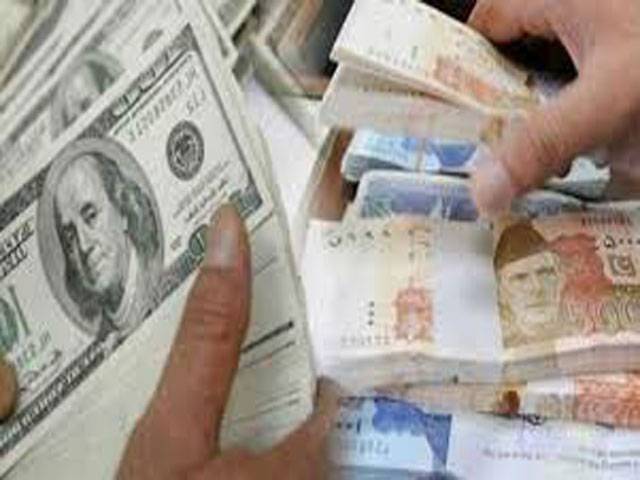ISLAMABAD - US dollar touched a record high level of Rs121.5 on Monday amid severe pressure on the country’s foreign exchange reserves due to widening of current account deficit. However, later the dollar came down to Rs119.84.
The dollar value of Rs121 is highest ever in the country’s history. Prior to going as high as Rs121, the rate of US dollar stood at Rs115.63 last week.
This was third time in six months when the US dollar is increasing against the local currency. The rupee has already dropped by 9.5 percent (5 per cent in December 2017 and 4.5 percent in March 2018) against the US dollar.
The State Bank of Pakistan has decided not to intervene in the market to control the dollar value.
“We will not intervene. This is a free market where market forces determine the rupee’s value,” said an official of the central bank.
“Today (Monday), the PKR-US$ exchange rate in the interbank market closed at PKR 119.84 per US$ while witnessing an intraday low and high of PKR 117.00 and PKR 121.50 per US$ respectively. This movement is based on foreign exchange demand-supply gap in the interbank market,” the SBP said in its official handout. The market-based adjustment is reflective of the country’s external balance of payments position which is under pressure due to a large trade deficit. Despite the continued growth in exports (13.3 percent in Jul-Apr FY18) and some uptick in remittances, growing imports have pushed the current account deficit to $ 14.0 billion during the first ten months of FY18, which is 1.5 times the level of deficit realized during the same period last year.
The SBP is of the view that this market-driven adjustment in the exchange rate along with other recent policy measures are expected to contain the imbalances in the external account thereby containing aggregate demand and also facilitate the prospects for generating non-debt creating inflows.
“SBP will continue to closely monitor the foreign exchange markets; and stands ready to ensure stability in the financial markets and curb the emergence of speculative pressures,” the statement concluded.
Former finance minister Dr Miftah Ismail said a couple of months ago that Pakistan did not see any further devaluation of rupee in near future.
He said now the exports had captured the upward trend as in just March the exports were up 24 per cent from a year ago.
“So I see good things happening right now and I do not see any further need of devaluation,” he added in April.
However, the rupee on Monday once again lost its value against the US dollar.
The government had allowed the rupee depreciation to increase its exports, which were continuously declining over last few years. Pakistan’s exports had increased by 15.28 percent and recorded at $21.3 billion during eleven months (July to May) of the ongoing fiscal year as against $18.5 billion of the corresponding period of last year. Similarly, the rupee depreciation would also help the Federal Board of Revenue to increase its revenues due to rupee depreciation.
The FBR collects almost half of its total revenues at the import stage which includes custom duties, regulatory duties, sales tax and withholding tax.
However, devaluation of the currency would increase the country’s external debt burden by an additional Rs360 billion– without borrowing a cent. Pakistan’s overall external debt and liabilities had increased to a record $91.8 billion. Similarly, the rupee deprecation would also fuel the inflation, which is currently under control. The CPI-based inflation has recorded at 3.81 percent during first eleven months (July-May) of the current fiscal year. The State Bank of Pakistan had projected the average inflation for FY18 to remain within SBP’s model-based range of 3.5-4.5 percent.
Pakistani currency is under pressure due to widening of the current account deficit and repayment of loans, which are sharply depleting country’s foreign exchange reserves. The reserves have declined to $10 billion. Meanwhile, the government would have to pay additional $2.5 billion in next couple of months, which would put further pressure on the foreign exchange reserves. Similarly, the current account deficit is also putting pressure on foreign exchange reserves. The current account deficit widened to 5.3 per cent of the GDP (gross domestic product), or $14.035 billion, in the first 10 months of the current fiscal year of 2018. The current account deficit increased 50 per cent from $9.354 billion in the corresponding period a year earlier.






